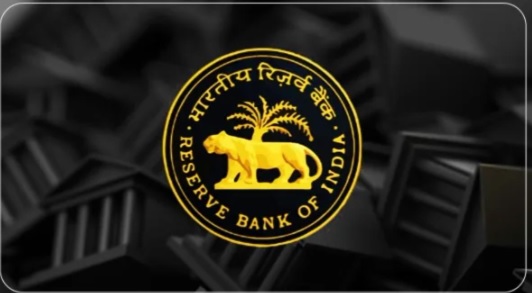- The Reserve Bank of India (RBI) generates a surplus, which refers to the excess of income over expenditure.
- This surplus is transferred to the Government of India, playing a vital role in supporting the government’s fiscal policies and budgetary requirements.

RBI’s Income Sources
- The RBI earns income from multiple channels, primarily related to its role as the central bank of India:
Interest on Rupee Securities (RS)
- Interest earned from investments in Indian government-approved rupee-denominated bonds and securities.
- This forms a significant portion of RBI’s income, as the RBI holds substantial government debt for monetary policy operations.
- Interest from Liquidity Adjustment Facility (LAF) & Marginal Standing Facility (MSF)
- LAF: A tool for managing liquidity in the banking system. Banks borrow or lend overnight funds to the RBI, generating interest income for the central bank.
- MSF: Allows banks to borrow overnight funds from the RBI at a higher rate than the repo rate, contributing to RBI’s income.
Interest on Loans & Advances
- Recipients: Central and State Governments, commercial banks, financial institutions, and RBI employees.
- Nature: Includes interest from short-term and long-term advances given for financial stability and policy implementation.
Interest from Foreign Sources
- Foreign Currency Assets (FCA): The RBI’s foreign exchange reserves are invested in sovereign bonds and other secure instruments globally, earning interest.
- Importance: Reflects India’s external sector operations, supporting the stability of the Indian Rupee and foreign exchange reserves.
RBI’s Expenditure
- While the RBI generates significant income, its expenditures are relatively modest, leading to a substantial surplus.
Risk Provisions
- Contingency Fund (CF):
- Purpose: Maintains a buffer for unforeseen financial risks such as depreciation in the value of securities, changes in monetary policy, and global economic shocks.
- Management: The CF is adjusted based on evolving risks and market conditions.
- Asset Development Fund (ADF):
- Purpose: Supports investments in RBI’s subsidiaries, financial institutions, and internal capital expenditures, ensuring long-term operational efficiency.
- Focus Areas: Infrastructure development, technological upgrades, and strengthening RBI’s institutional capabilities.
Operational Costs
- Currency Printing: Costs associated with designing, printing, and distributing currency notes across the country.
- Agency Charges: Payments to banks and other institutions for services rendered, such as handling government accounts and managing cash logistics.
- Employee Costs: Salaries, pensions, training, and welfare benefits for RBI employees.
Regulatory Framework for Surplus Transfer
- The transfer of surplus from the RBI to the Government of India is governed by a mix of legal mandates, policy recommendations, and economic capital frameworks:
RBI Act, 1934 (Section 47)
- Mandate: This section requires the RBI to transfer its profits to the central government after deducting expenses, risk provisions, and operational costs.
- Flexibility: Provides the RBI with the discretion to maintain adequate reserves for financial stability while ensuring surplus transfer to the government.
Recommendations from Key Committees
- Malegam Committee (2013): Recommended increasing the surplus transfer to support the government’s fiscal deficit reduction efforts.
- Bimal Jalan Committee (2018): Established the Economic Capital Framework (ECF) to determine the appropriate level of surplus transfer while maintaining RBI’s financial health.
Economic Capital Framework (ECF)
- The ECF defines how surplus transfer should be managed based on RBI’s balance sheet composition:
- Realized Equity: Maintained between 5.5% and 6.5% of the RBI’s total balance sheet. Any excess over this range is transferred to the government.
- Currency & Gold Revaluation Account (CGRA): Includes unrealized gains/losses from currency and gold holdings, with a target range of 20.8% to 25.4% of the balance sheet. Excess CGRA is transferred to the government.
Key Features of the Surplus Transfer Process
- Surplus Calculation: After accounting for operational expenses, risk provisions, and capital reserves, the remaining profits are deemed surplus.
- Annual Transfer: The RBI transfers surplus annually, with the amount varying based on income, expenditure, and balance sheet size.
- Fiscal Impact: The surplus contributes to the central government’s budget, reducing the need for borrowing and supporting fiscal consolidation.
Impact of RBI’s Surplus Transfer
Fiscal Support to the Government
- Provides a significant source of non-debt funding, helping reduce the fiscal deficit.
- Supports government spending on infrastructure, social programs, and economic development.
Monetary Policy Influence
- Reflects the RBI’s operational efficiency and the broader health of the Indian economy.
- Influences interest rate policies, liquidity management, and inflation control.
Global Comparisons
- Similar surplus transfer mechanisms are followed by central banks globally, such as the Federal Reserve (USA) and European Central Bank (ECB), though the specific rules vary.
- The RBI’s approach is unique in balancing financial autonomy with fiscal responsibility.



